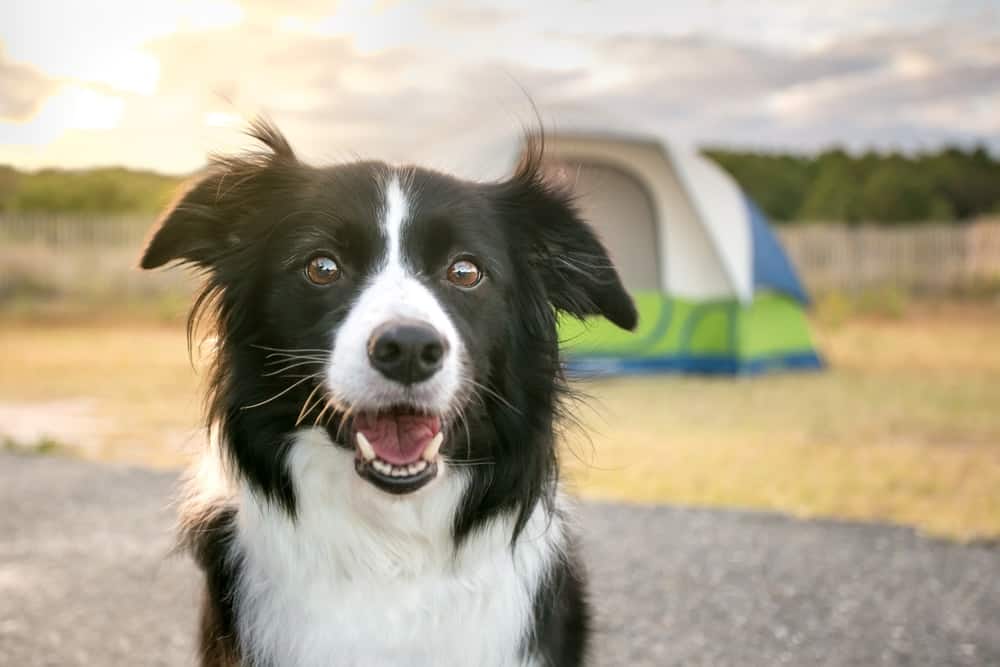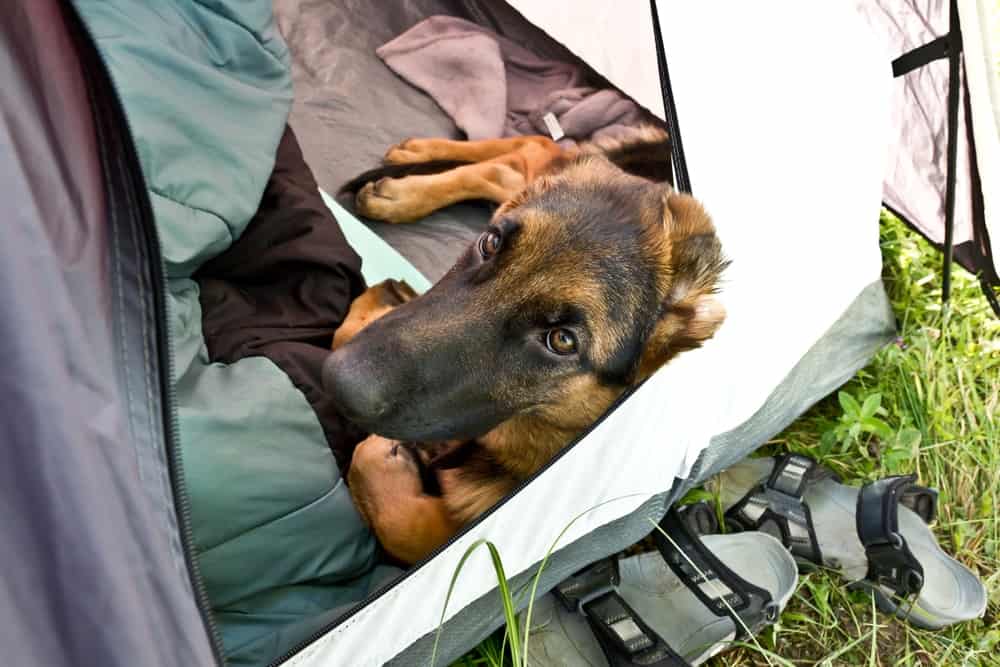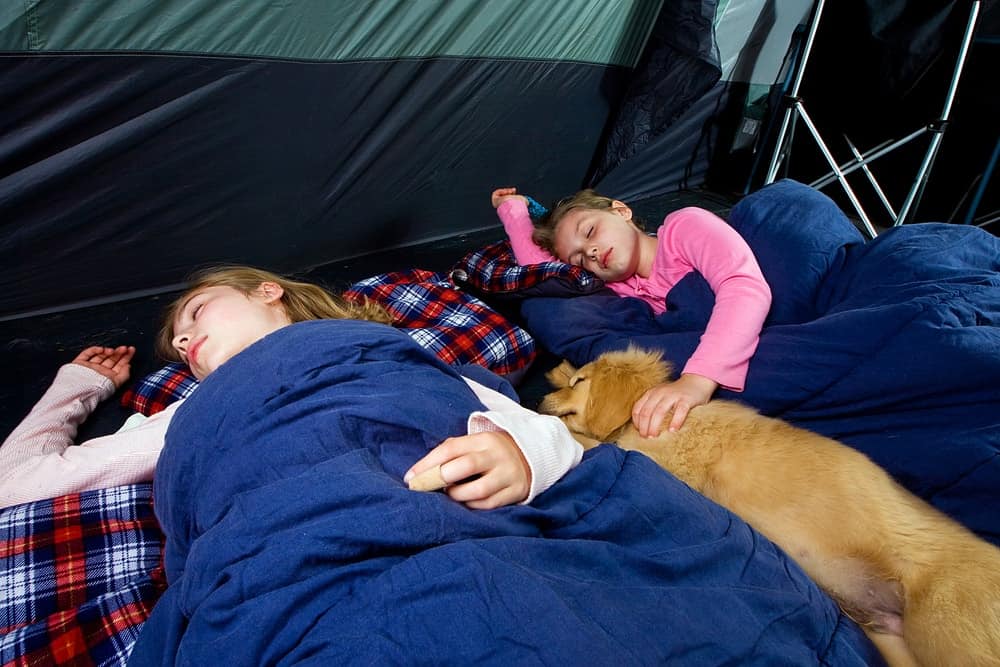“This post contains affiliate links, and I will be compensated if you make a purchase after clicking on my links.”
For pet parents that love the great outdoors, few things are more enjoyable than sleeping beneath the stars with your best furry friend by your side. That is, if you’re properly prepared for a fun, safe, and stress-free adventure!
Even the most experienced campers know that preparation is key to an enjoyable camping experience – especially with a dog in tow! Use this guide as a checklist before heading out and pitching that tent.

1. Check out your destination beforehand. Many state and national parks, campsites, and wilderness areas allow camping, but don’t allow pets to join in the fun. Luckily, there are plenty of places that do welcome four-legged campers, too. Just check out your destination ahead of your arrival and be aware of any special requirements (including, unfortunately, breed restrictions) for camping with dogs. While you’re verifying that your camp location is dog-friendly, make note of the nearest veterinarian in the event of an emergency.
2. Schedule a veterinary visit before you travel. Make sure your dog is up-to-date on required vaccines, is current on flea and tick prevention is microchipped, and is in good general health. Camping can be a source of stress for dogs that aren’t accustomed to sleeping outdoors, traveling to a new destination, and hearing the sounds of nature close by.
3. Don’t forget your dog’s license and ID tags. While you’d never anticipate your dog getting lost, be prepared in the event that he does. Make sure he’s wearing a collar and ID tag at all times. Because you’ll be camping away from home, your dog can easily become lost and unable to find his way back to you. An ID tag should include a current phone number and address. While you’re at it, take a moment to make sure your dog’s microchip registration is up-to-date with current contact information, too.

4. Bring a crate, ex-pen, or other reliable restraint device. Although the idea of camping with your dog is to enjoy your time together, there will be times when you’ll need both hands free while your dog is safely restrained. If your dog isn’t used to being crated, an exercise pen or tie-out will work as well. Just be sure your dog is safely and reliably contained within the confines of your campsite and can’t break away to chase after squirrels or other wildlife.
5. Always bring a leash and collar. Extras will be a great idea.
6. Pack the necessities – plus extras of everything. These include lots of fresh clean drinking water, dog food, and food and water bowls. To prevent upset stomach, try to stick to your dog’s usual feeding schedule, but remember that he may require additional water and food in the new environment. Also, bring along familiar objects like a favorite dog bed, toys, and treats. Other camping necessities for your dog include poop bags, clean-up wipes, and a pet first aid kit.
7. Consider the other campers around you. Although many campsites are dog-friendly, not everyone will be as welcoming to dogs as you would be. It’s important that you make an effort to respect other campers nearby. Make sure you have absolute control over your dog at all times, keeping him leashed or restrained and unable to run off and visit other campsites and wildlife in the area. Supervise your dog very closely while he’s around children, other people, and other pets.

8. Pick up after your dog at all times. This includes both bathroom waste and any uneaten food or treats. Any waste left behind is both a nuisance to other campers and can attract unwelcome wildlife into your camp.
9. Try to be courteous of other campers as you walk your pooch, and keep him calm and under control at all times. Repeated barking, growling, or running loose can disturb other campers and can lead a campground to rethinking their dog-friendly policy in the future.
Remember, camping should be a fun, rewarding experience for both you and your dog. Be mindful of sources of stress and if your dog is uncomfortable, scared, or behaving unusually, consider leaving him home next time.
Do you have any additional tips for camping with dogs? Please share your own experiences in a comment below!



















Sherry
Jul 18, 2019 at 10:33 pm
I take a clean sheet for my dog to lay on in the shade. It’s cooler for her